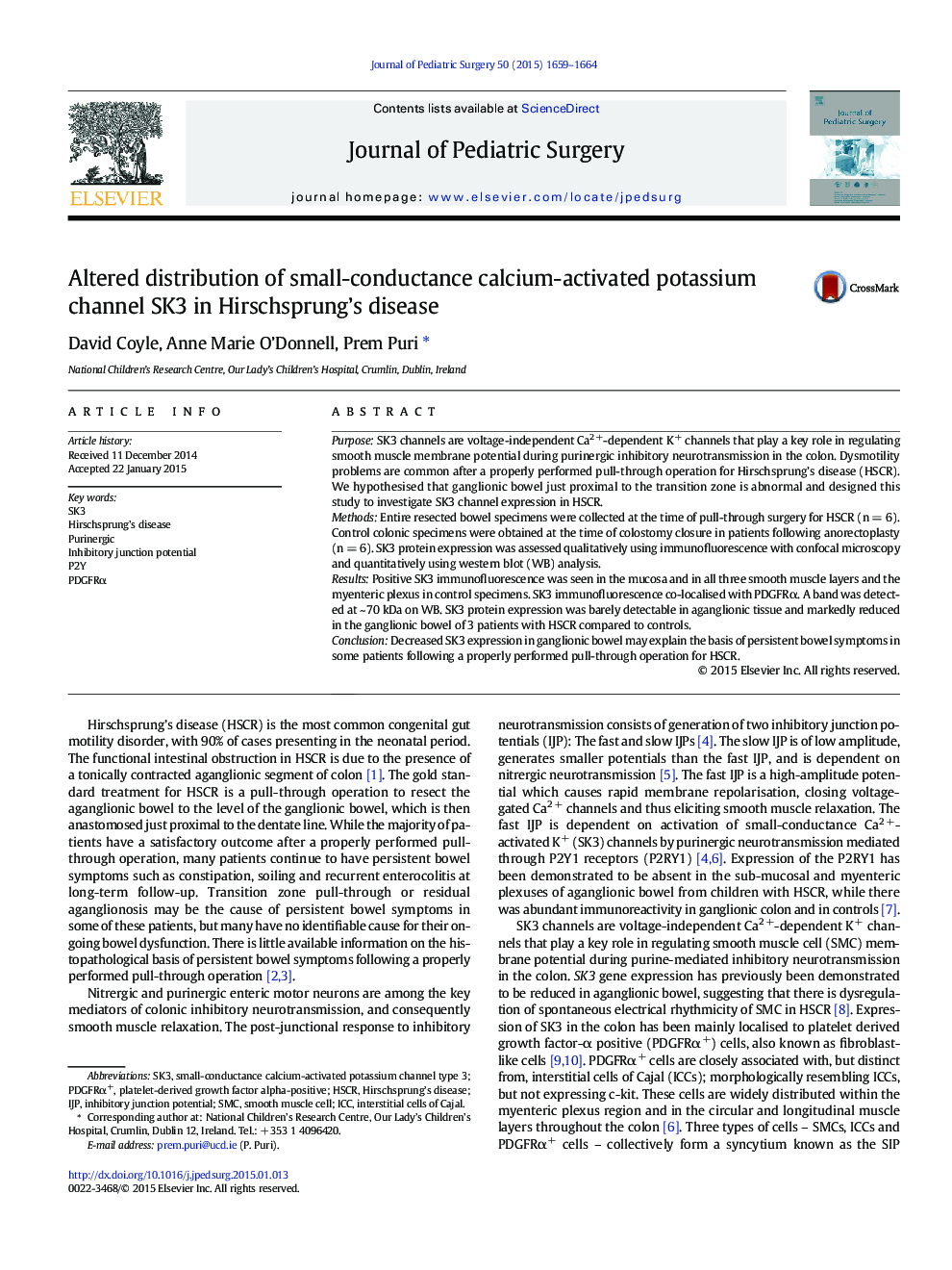| Article ID | Journal | Published Year | Pages | File Type |
|---|---|---|---|---|
| 4154994 | Journal of Pediatric Surgery | 2015 | 6 Pages |
PurposeSK3 channels are voltage-independent Ca2 +-dependent K+ channels that play a key role in regulating smooth muscle membrane potential during purinergic inhibitory neurotransmission in the colon. Dysmotility problems are common after a properly performed pull-through operation for Hirschsprung’s disease (HSCR). We hypothesised that ganglionic bowel just proximal to the transition zone is abnormal and designed this study to investigate SK3 channel expression in HSCR.MethodsEntire resected bowel specimens were collected at the time of pull-through surgery for HSCR (n = 6). Control colonic specimens were obtained at the time of colostomy closure in patients following anorectoplasty (n = 6). SK3 protein expression was assessed qualitatively using immunofluorescence with confocal microscopy and quantitatively using western blot (WB) analysis.ResultsPositive SK3 immunofluorescence was seen in the mucosa and in all three smooth muscle layers and the myenteric plexus in control specimens. SK3 immunofluorescence co-localised with PDGFRα. A band was detected at ~ 70 kDa on WB. SK3 protein expression was barely detectable in aganglionic tissue and markedly reduced in the ganglionic bowel of 3 patients with HSCR compared to controls.ConclusionDecreased SK3 expression in ganglionic bowel may explain the basis of persistent bowel symptoms in some patients following a properly performed pull-through operation for HSCR.
